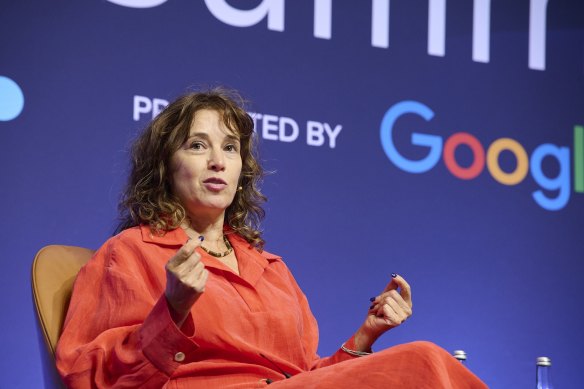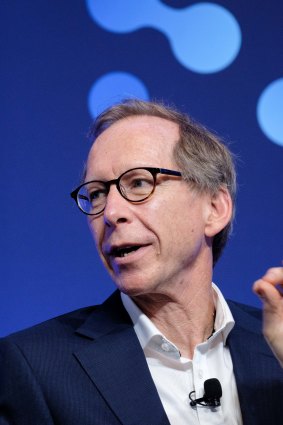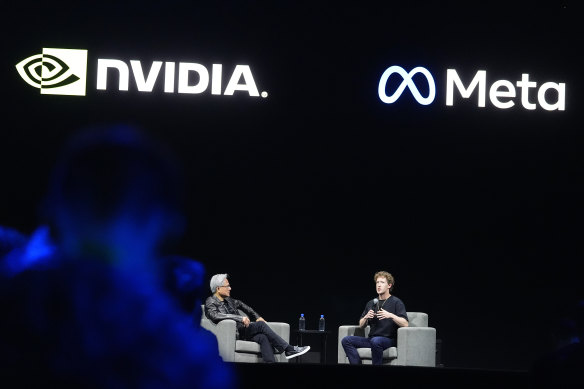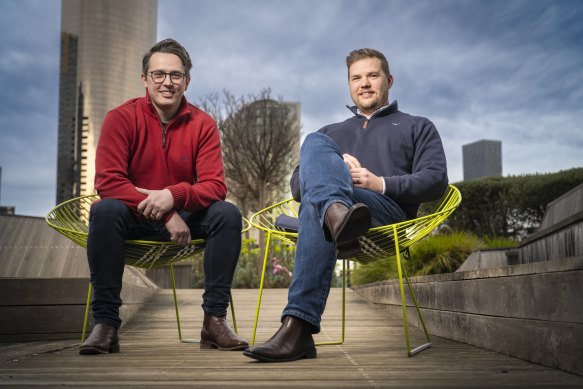
“Every developer is scrambling right now to integrate AI into their products and Canva is one company that arguably needs the biggest boost here to stay ahead of Adobe and Microsoft’s monumental AI push,” Gilbert said.
“The response to Canva’s AI text generator ‘Magic Write’ seems underwhelming, so acquiring an established, dedicated generative AI platform makes more sense than developing one from scratch. It really all depends on how innovative Canva’s integration of Leonardo’s image generation capabilities winds up being.”
Former Boston Consulting Group strategist Barb Hyman leads one of Australia’s other most successful AI start-ups, Sapia.ai, which has raised $17 million from Woolworths and Macquarie and whose software is dubbed an “AI career coach in your back pocket”.
“I love the story of one amazing Australian tech company buying another one, there’s a beautiful symmetry in that. I’m delighted for them,” she said.
For Hyman, Australian AI companies shouldn’t even try to directly compete with the likes of Google, which employs thousands of workers who have PhDs in artificial intelligence.
“There is a different way to be competitive ... that’s when you have a data set that is unique. We have a proprietary data set that took us two years to build initially,” she said.

Barb Hyman is founder and CEO of Sapia.ai.Credit: AFR
“The ones with the unique data are the ones who are going to see the exponential value, rather than just trying to compete with Google or Meta using all the same open-source data that everyone else has.”
For the local economy and investors, there’s now much riding on the success of Canva and Sapia.ai, as well as the degree to which other businesses can adopt AI technologies.
Australia’s productivity has been flat for the past decade and AI adoption will be crucial to the growth of Australia’s healthcare and education industries in particular, according to Dr Stephen King, who serves on Australia’s Productivity Commission.
“AI could be the way that the developed world gets out of its current productivity malaise,” King said.

Dr Stephen King serves on Australia’s productivity commission.Credit: AFR
“AI is the first general purpose technology likely to radically improve productivity in service-dominated areas.
“Australia doesn’t do a lot of inventing of new technology. Ninety-eight per cent of our business productivity improvement comes from the adoption, not creating the new stuff. So the big advancements that AI will make to Australian productivity will occur through its adoption.”
Kim Oosthuizen, head of artificial intelligence for software giant SAP, agreed and said that it’s important for businesses to keep humans in the loop when it comes to AI usage, to reduce error rates and “hallucinations”, the term used to describe incorrect or misleading results generated by AI models.
“Most people think that AI is just ChatGPT. But in a business context, people don’t realise that these tools are here today, we’re just not aware necessarily that they’re AI,” she said. “And I don’t think most people know or care which technology sits in the back end, or which vendor is responsible for it, it’s more about, is it really useful?”
That question over usefulness is critical for US investors who are weighing AI’s potential, and are preparing for the first interest rate cuts since 2020. Shares in Apple, Microsoft, Google parent company Alphabet and Nvidia have all taken a hit over the past week, leading some to question whether the AI hype train is over.

Nvidia chief executive officer Jensen Huang, left, talks about artificial intelligence with Meta founder and CEO Mark Zuckerberg at SIGGRAPH 2024 – a conference on computer graphics and interactive techniques in Denver.Credit: AP
Stocks in Nvidia have been particularly volatile, falling more than 25 per cent from their June peaks of over $US140 ($215) a share before on Thursday bouncing back to record the biggest daily jump in market value in Wall Street history. The company dominates the market for the chips underpinning generative AI programs, and is widely seen as a proxy for the heady opportunities – and what others perceive as excessive hype – in the sector. Nvidia commands roughly 80 per cent of the AI chip market.
Meanwhile, infrastructure costs are skyrocketing across the board. The AI sector has similar traits to the cryptocurrency sector, in that it relies on heavy computing power for its calculations.
In announcing Meta’s quarterly earnings this week, chief executive Mark Zuckerberg said the computing resources required to train its large language model, Llama 4, would likely be almost 10-times as much as Meta used to train Llama 3. Future models will grow beyond that, he said.
Loading
“Meta AI is on track to be the most used AI assistant in the world by the end of the year,” Zuckerberg told investors and analysts on a conference call.
“At this point, I’d rather risk building capacity before it is needed rather than too late given the long lead times for spinning up new inference projects.”
Meta is spending billions in a bid for AI dominance. To meet its AI needs, the company would buy 350,000 Nvidia H100 graphics cards by the end of 2024, he said.
Google parent company Alphabet meanwhile last week reported that capital expenditure was $US13.2 billion in the second quarter, up 91.4 per cent from a year ago. Microsoft this week reported capital expenditure of $US19 billion for the quarter, up nearly 77.6 per cent from $US10.7 billion a year prior.
Not everyone is convinced the price tag will be worth it.
Goldman Sachs’ top stock analyst, Jim Covello, believes most generative AI technology is not ready for prime time. He said tech giants and others were set to spend more than $US1 trillion on AI capex in coming years, with so far little to show for it.
“Despite its expensive price tag, the technology is nowhere near where it needs to be in order to be useful,” Covello said in a recent AI report.
“Overbuilding things the world doesn’t have use for, or is not ready for, typically ends badly.”
For Covello, most technological transformations in history have replaced very expensive solutions with very cheap solutions. He said that replacing jobs with extremely expensive technology was basically the opposite of how things should be done.
“We estimate that the Al infrastructure build-out will cost over $US1 trillion in the next several years alone, which includes spending on data centres, utilities, and applications,” Covello said.
“So, the crucial question is: what $US1 trillion problem will Al solve? Replacing low-wage jobs with tremendously costly technology is basically the polar opposite of the prior technology transitions I’ve witnessed in my 30 years of closely following the tech industry.”
Some analysts see the lofty valuations as justified, however. Rhys Davis, InvestorHub chief and co-founder, said the average value multiplier for AI companies sat at around 25-times, in comparison to the estimated 40-times of Canva and mining companies trading at 70-times.

InvestorHub co-founders and co-CEOs Rhys Davis and Ben Williamson.Credit: AFR
“To say AI is ‘overhyped’ ignores the fact that tech and non-tech businesses are exceeding those valuations,” he said.
“AI’s transformative nature cannot be understated. It’s a driving force that’s enabling companies to scale and operate at an unprecedented efficiency level, previously thought unimaginable. Of course, what’s crucially important is the proprietary and defensible nature of the technology ‘under the hood’.”
For Covello, the AI bubble could take a long time to burst. In the meantime, it’s AI infrastructure providers who will likely continue to benefit.
“While the question of whether AI technology will ever deliver on the promise many people are excited about today is certainly debatable,” he said.
“The less debatable point is that AI technology is exceptionally expensive, and to justify those costs, the technology must be able to solve complex problems, which it isn’t designed to do.”









 Add Category
Add Category